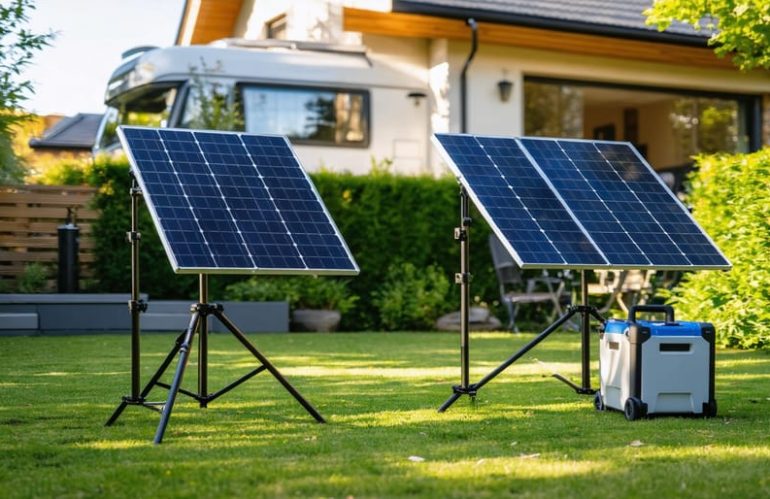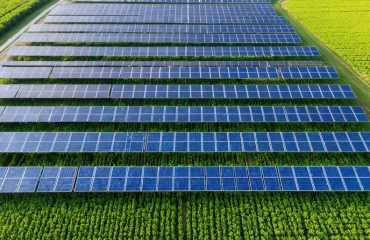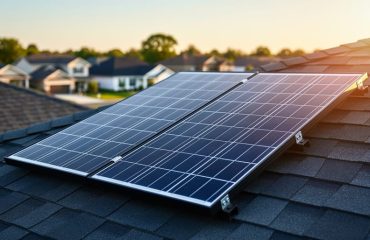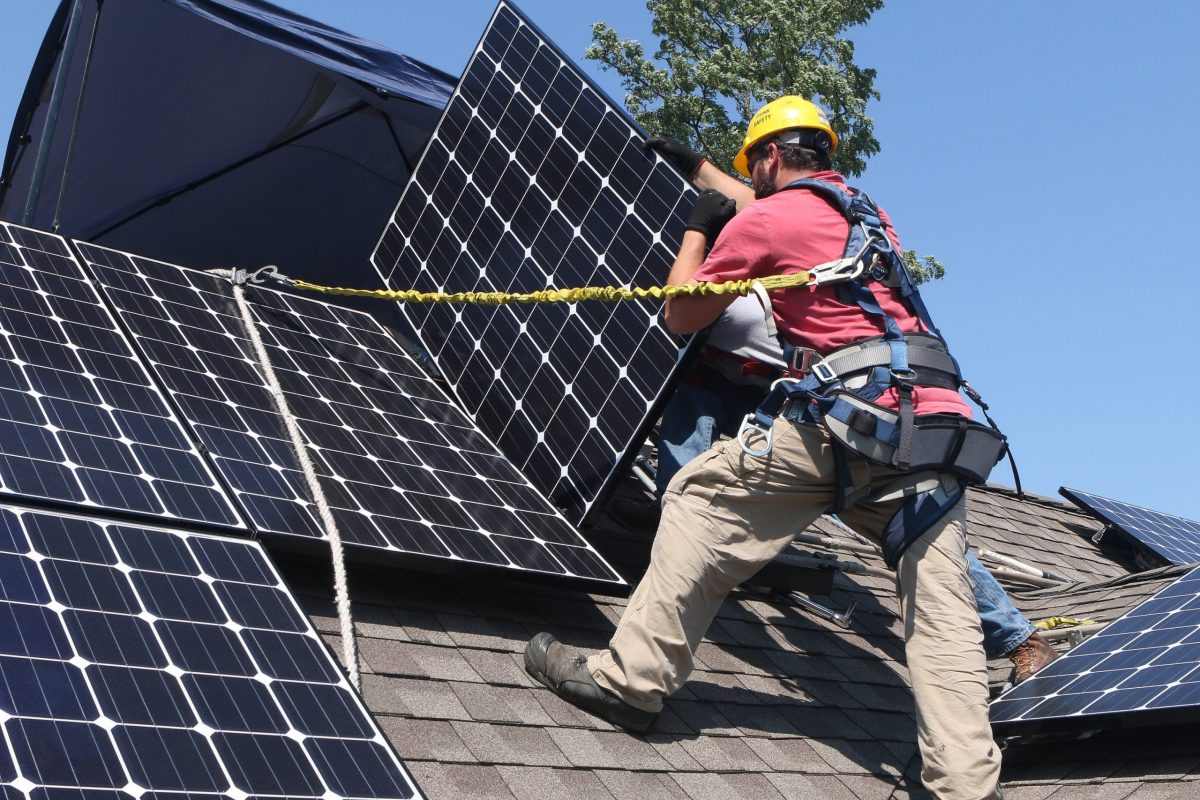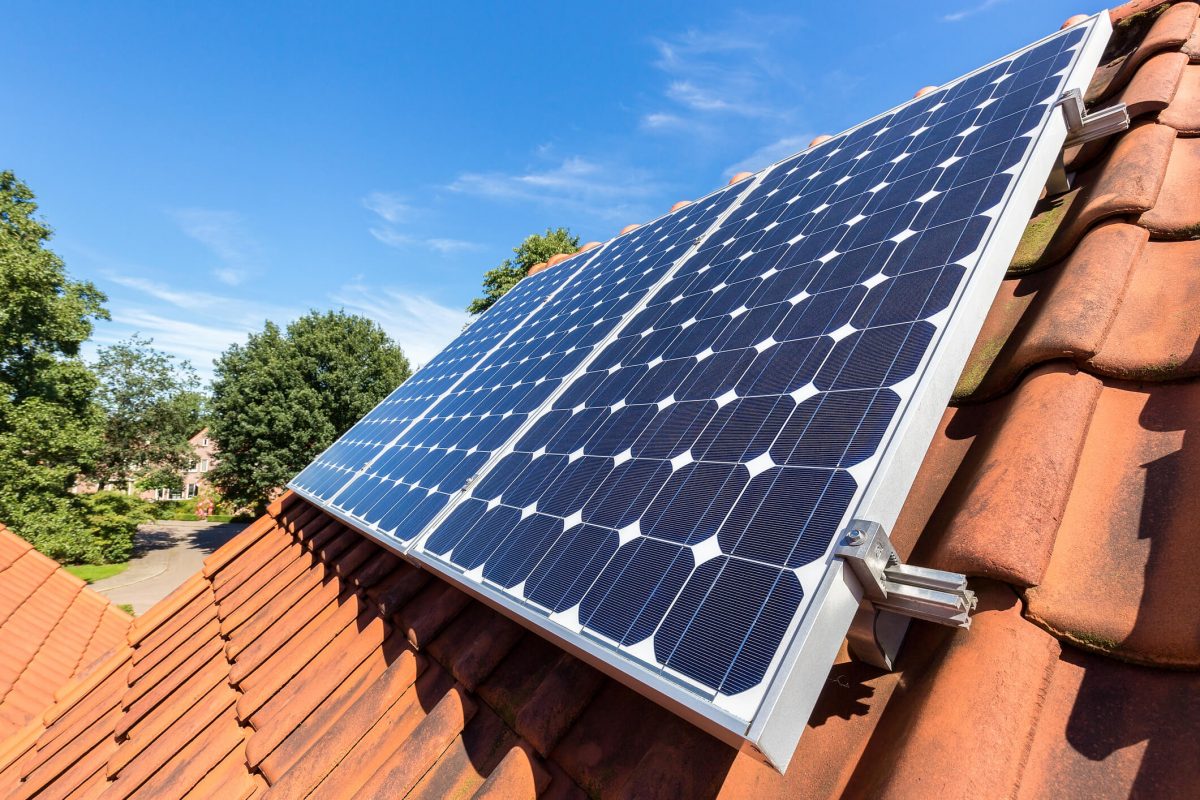Mobile solar systems are revolutionizing how homeowners access clean energy without permanent roof installations or hefty commitments. Unlike traditional fixed panels, these flexible solutions let you generate electricity whether you’re renting an apartment, testing solar viability for your property, or simply wanting power independence you can take with you.
**What makes mobile solar different?** These systems range from portable panels you can set up in your backyard to wheeled units that follow you from home to RV to cabin. They plug into standard outlets, require no structural modifications, and can start saving you money on day one—no permits, no contractor crews, no roof penetrations.
The technology has matured dramatically. Today’s mobile systems deliver genuine power output that can offset significant portions of your electric bill, charge electric vehicles, or keep essential appliances running during outages. You’re not sacrificing performance for portability anymore.
**The real advantage?** Flexibility meets sustainability. Move to a new rental? Take your system with you. Want to optimize sun exposure seasonally? Reposition your panels in minutes. Concerned about roof age or HOA restrictions? Mobile solar sidesteps these barriers entirely while still delivering the environmental and financial benefits you’re seeking.
This guide breaks down practical installation methods, honest cost comparisons, and decision-making frameworks to help you determine if mobile solar fits your lifestyle—without the technical overwhelm or sales pressure.
What Makes a Solar System ‘Mobile’?
When you hear “mobile solar system,” you might picture panels strapped to an RV roof or a portable battery pack for camping. While those are certainly mobile options, the term means something broader and more practical for homeowners.
A mobile solar installation simply refers to any solar setup that isn’t permanently fixed in one position. This could mean panels on lightweight frames that you can physically move around your property to catch optimal sunlight throughout the seasons. It might involve adjustable mounting systems that let you change the angle or orientation without professional help. Or it could be as simple as ground-mounted panels that aren’t cemented into place, giving you flexibility to relocate them if you move or redesign your yard.
Think of it as the difference between built-in furniture and pieces you can rearrange. Both serve the same purpose, but one offers flexibility the other doesn’t.
Common mobile solar approaches include portable panel kits with folding stands, ground mounts with movable bases, and vertical solar panels on adjustable frames. These systems typically generate the same electricity as traditional rooftop installations—they’re just not bolted down permanently.
Here’s what mobile doesn’t mean: it’s not necessarily about taking panels with you on trips or powering devices away from home. For homeowners, mobile solar is about maintaining options. Maybe you’re renting and can’t modify the roof. Perhaps you’re unsure about long-term commitment. Or you simply want the freedom to optimize your setup as trees grow or your energy needs change. Mobile systems give you that flexibility without sacrificing the financial and environmental benefits of going solar.
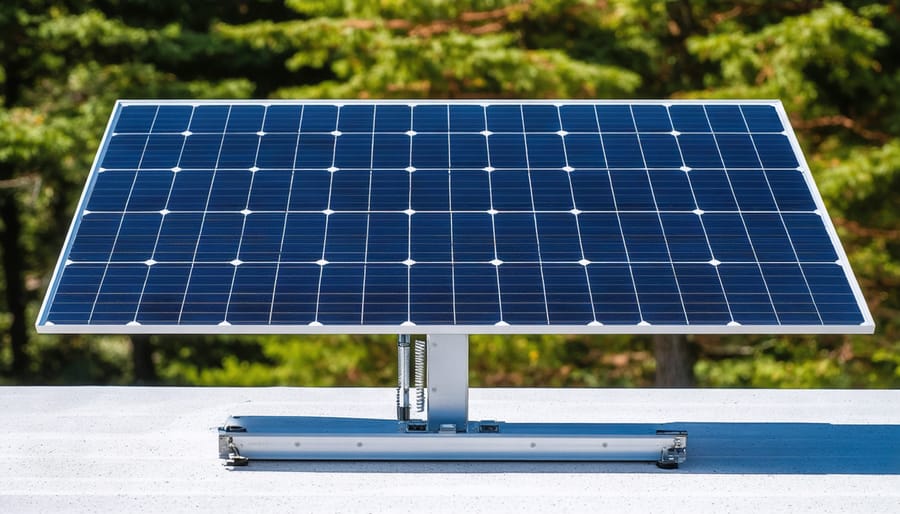
Why Homeowners Choose Mobile Installation Methods
Seasonal Sun Tracking
The sun’s position changes dramatically throughout the year, and mobile solar systems give you a powerful advantage: the ability to adjust your panel angles to match these seasonal shifts. During summer months, the sun rides high in the sky, while winter brings a lower arc across the horizon. By tilting your panels to track these changes—steeper in winter, flatter in summer—you can capture significantly more sunlight year-round.
This flexibility translates directly to your wallet. Fixed systems often lose 10-25% of potential energy because they can’t adapt to seasonal variations. With adjustable mounting, you’re positioning your panels at the optimal angle for each season, which means more electricity generated and lower utility bills throughout the year. The adjustment process itself is straightforward—most mobile systems use simple tilt mechanisms that take just minutes to modify a few times annually.
Think of it as helping your panels work smarter, not harder. Combined with basic maintenance to maximize energy production, seasonal adjustments ensure you’re getting the best possible return on your solar investment without complex technology or expensive equipment.
Rental Properties and Temporary Homes
Mobile solar systems offer a practical solution if you’re renting or anticipate relocating in the near future. Unlike rooftop installations that remain attached to the property, portable systems are yours to keep—meaning your investment moves with you. This flexibility is particularly valuable for renters who want to reduce their electricity bills without making permanent modifications that require landlord approval.
When you relocate, simply disconnect your panels, inverter, and battery storage, and reinstall them at your new home. This portability eliminates the common dilemma of leaving behind a costly solar array or negotiating its value during a property sale. You’ll continue enjoying lower energy costs and environmental benefits regardless of where life takes you.
Mobile systems also work well for those testing solar energy before committing to a permanent installation. You can experience firsthand savings and learn about your energy usage patterns without the long-term commitment, making it a low-risk entry point into sustainable living.
Testing Before Permanent Installation
One of the smartest ways to use a mobile solar system is as a testing ground before investing in permanent panels. Think of it as a “try before you buy” approach that can save you thousands of dollars in repositioning costs.
Start by moving your portable panels around your property throughout different seasons. You’ll quickly discover which spots receive the most consistent sunlight and which areas have unexpected shade from trees, chimneys, or neighboring structures. This real-world data is far more valuable than any sun calculator app.
Track your energy production in different locations over several weeks. You might be surprised—that spot you assumed was perfect could underperform, while an unexpected location becomes your power champion. Many homeowners discover their initial assumptions about optimal placement were completely wrong.
This trial period also helps you understand your actual energy needs versus your estimates. You’ll see exactly how many panels you need and whether solar truly fits your lifestyle before drilling holes in your roof or pouring concrete foundations for ground mounts.
Common Mobile Solar Installation Techniques
Ground-Mounted Adjustable Frames
Ground-mounted adjustable frames offer a smart middle ground between permanent installations and truly portable systems. These frames sit on your lawn or property using either heavy ballast weights (concrete blocks or specialized bases) or ground anchors that require minimal digging. The key advantage? You can move them as your needs change.
This flexibility is particularly valuable if your yard experiences seasonal shade changes—perhaps a neighbor’s tree casts shadows differently throughout the year, or you want to optimize panel angles for winter versus summer sun. Rather than committing to a fixed location that might not work year-round, you can reposition these systems to chase optimal sunlight.
Ballasted systems are especially appealing for renters or those avoiding permanent property modifications. They leave minimal impact and can be relocated if you move. Installation typically takes just a few hours with basic tools, and no special permits are usually required since you’re not modifying your property’s structure.
The frames themselves are designed for stability—quality systems withstand typical wind and weather conditions without issue. Most models allow angle adjustments too, so you can tilt panels seasonally for maximum efficiency. While they occupy yard space, many homeowners appreciate the ability to test solar performance in different locations before committing to permanent placement.
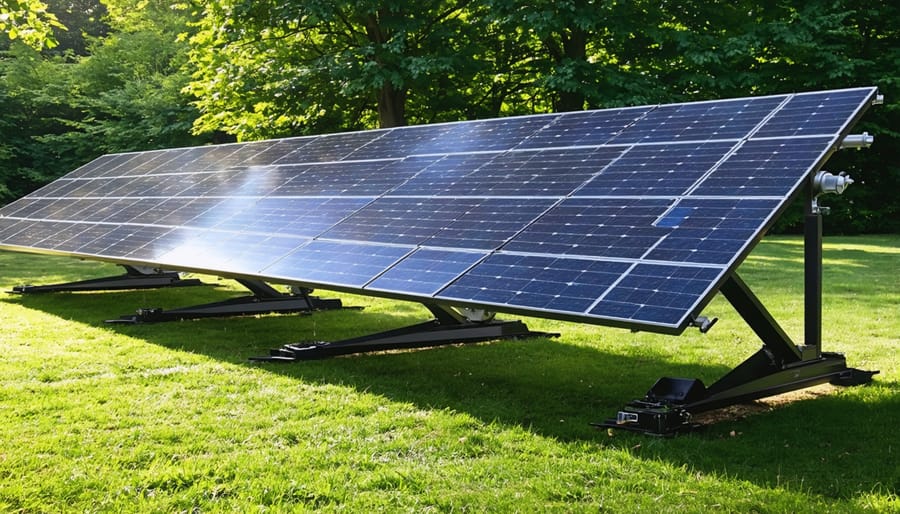
Portable Solar Panel Arrays
Portable solar panel arrays bring flexibility to your property without requiring permanent installation. These systems typically come in two designs: foldable panels that collapse briefcase-style for easy storage, and wheeled units that roll wherever you need power.
Foldable panels are lightweight champions, weighing between 20-50 pounds and producing 100-400 watts. You can set them up on your patio during weekend barbecues, move them to sunnier spots as seasons change, or tuck them in your garage when not needed. They’re perfect for charging devices, running small appliances, or keeping emergency equipment powered during outages.
Wheeled solar arrays offer more substantial power—typically 500-2,000 watts—and include integrated battery storage. Think of them as mobile power stations you can position anywhere on your property. These units shine during outdoor events, providing clean energy for speakers, lighting, or catering equipment without noisy generators.
The beauty of portable systems? Zero installation costs and complete freedom. Renters can take them when moving, homeowners can test solar’s benefits before committing to rooftop panels, and everyone gains reliable backup power. Most portable arrays plug directly into standard outlets on your devices or include USB ports, making them genuinely user-friendly. Prices range from $200 for basic foldable panels to $3,000 for premium wheeled systems with substantial battery capacity.
Adjustable Roof Mounting Systems
If you’re looking for a middle ground between fully portable and permanently fixed solar panels, adjustable roof mounting systems offer an excellent compromise. These semi-permanent setups attach securely to your roof but include mechanisms that let you change the tilt and angle of your panels throughout the year—without moving the entire system.
Think of it like adjusting your car’s side mirrors: the mount stays put, but you can fine-tune the position for optimal performance. This matters because the sun’s path changes with the seasons. In winter, it’s lower in the sky, while summer brings a higher arc. By adjusting your panel angle just two to four times a year, you can capture significantly more sunlight—studies show improvements of 10-20% in energy production compared to fixed angles.
Most adjustable systems feature simple manual mechanisms with pre-set angles, making seasonal adjustments a 10-minute task requiring only basic tools. You’re not climbing up there weekly; just occasional tweaks during spring and fall optimize your output.
These systems work particularly well if you’re testing solar before committing to solar-integrated design or if your roof pitch isn’t ideal for year-round solar collection. Installation typically doesn’t require roof penetrations when using weighted ballast systems, making them renter-friendly in some cases.
The financial benefit is clear: you get better energy production than fixed panels while maintaining flexibility—a smart choice for homeowners wanting to maximize their solar investment without permanent commitment.
The Financial Reality: Are Mobile Systems Worth It?
Let’s talk numbers, because that’s what really matters when you’re deciding whether mobile solar makes sense for your home.
Mobile solar systems typically cost 15-30% less upfront than traditional fixed installations. Why? You’re eliminating expensive roof penetrations, structural reinforcements, and permanent mounting hardware. For a typical residential setup, you’re looking at $8,000-$15,000 for a quality mobile system versus $12,000-$25,000 for permanent rooftop panels. That’s real money staying in your pocket.
The catch? Mobile systems may produce slightly less energy than optimally-positioned fixed arrays—we’re talking about 5-15% less efficiency depending on how often you adjust panel angles. But here’s where it gets interesting: if you’re diligent about repositioning your panels seasonally or even monthly to track the sun, you can nearly match fixed system performance.
Sarah, a homeowner in Arizona, shared her experience: “I was skeptical about losing efficiency, but by moving my panels just four times a year to optimize sun angles, my energy bills dropped 65%. Plus, I took them with me when I relocated for work—something impossible with rooftop panels.”
Return on investment usually hits around 6-8 years for mobile systems in sunny regions, comparable to fixed installations. The difference? You maintain flexibility. Renting? Take them when you leave. Selling your home? They’re yours to keep, protecting your investment.
Long-term savings tell the real story. After that initial payback period, you’re looking at decades of essentially free electricity. With average electricity rates rising 3-5% annually, locking in your energy costs today compounds savings significantly over time.
The bottom line: Mobile solar makes financial sense if you value flexibility alongside savings. You’ll achieve similar long-term returns with lower upfront costs and zero regrets about permanent modifications. For homeowners testing the solar waters or those with uncertain housing futures, that’s a winning combination.
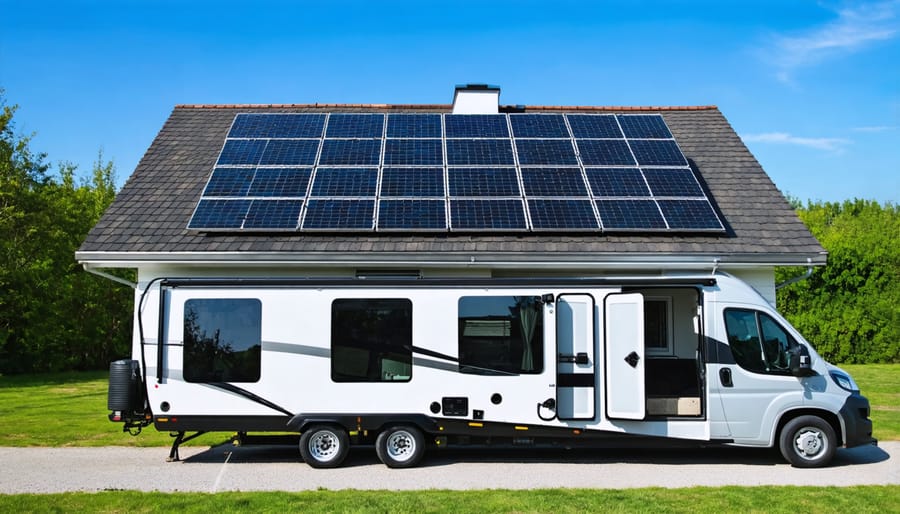
Busting Common Myths About Mobile Solar
You’ve probably heard some concerns about mobile solar systems that might be holding you back from exploring this option. Let’s set the record straight with some facts.
**”Mobile solar systems aren’t as efficient as fixed installations.”** This is partially true but misleading. While rooftop systems may capture slightly more sunlight due to optimal positioning, modern portable panels reach 20-23% efficiency—essentially the same technology. The real difference? You can move mobile panels throughout the day to follow the sun, potentially offsetting any theoretical disadvantage. For most homeowners, the efficiency is more than adequate for their needs.
**”They’re not safe or durable enough.”** Mobile solar systems meet the same safety standards as permanent installations. Quality portable panels feature weatherproof construction, protective casings, and built-in safety mechanisms. Many are designed to withstand harsh outdoor conditions and come with warranties comparable to traditional panels. The key is choosing reputable manufacturers rather than bargain-basement options.
**”They’re only for camping, not real home use.”** This outdated belief ignores how far the technology has come. Today’s mobile systems can power everything from refrigerators to home offices. Homeowners successfully use them for emergency backup, supplementing grid power, or meeting 100% of their energy needs in smaller homes. They’re particularly practical for renters or anyone who might relocate.
**”The upfront cost isn’t worth it.”** Mobile systems actually cost less initially than traditional installations since they don’t require professional mounting or electrical work. You’ll start saving on energy bills immediately, and if you move, your investment moves with you—unlike rooftop panels that stay with the property.
Is a Mobile Solar System Right for Your Home?
Mobile solar solutions aren’t for everyone, and that’s perfectly okay. The key is determining whether this flexible approach aligns with your unique circumstances and energy goals.
Start by asking yourself a few straightforward questions: Do you rent your home or plan to move within the next few years? Is your roof unsuitable for traditional panels due to shading, orientation, or structural concerns? Are you testing the solar waters before committing to a permanent installation? Do you need power for RVs, outdoor activities, or emergency backup? If you answered yes to any of these, mobile solar deserves serious consideration.
Your property type matters too. Homeowners with ample yard space can easily accommodate ground-mounted portable arrays, while apartment dwellers might benefit from smaller balcony systems or portable power stations. Even if you own your home, mobile systems make sense when you’re unsure about long-term plans or want flexibility as your energy needs evolve.
Consider your energy goals realistically. Mobile systems work beautifully for offsetting a portion of your electricity bill, powering specific appliances, or providing backup during outages. However, if you’re aiming for complete energy independence, a permanent rooftop installation typically delivers better long-term value.
Ready to move forward? Start by calculating your daily energy consumption, researching reputable solar providers, and requesting quotes for systems matching your identified needs. Many companies offer free consultations to help you determine the right size and configuration for your situation.
Mobile solar systems open up a world of possibilities for homeowners who want the benefits of solar energy without the permanence of traditional rooftop installations. Whether you’re renting, planning to move, or simply want the freedom to adapt your energy setup as your needs change, portable solar solutions offer remarkable flexibility while still delivering real environmental impact and meaningful savings on your electricity bills.
The beauty of mobile solar is that you can start small and scale up as you gain confidence. You’re not locked into a decades-long commitment, yet you still contribute to a cleaner planet while keeping more money in your pocket. From powering outdoor spaces to providing backup energy during outages, these systems adapt to your lifestyle rather than forcing you to adapt to them.
Now is the perfect time to explore your options. The technology has matured, costs have become more accessible, and installation is straightforward enough for most homeowners to manage. Take the next step with confidence—mobile solar isn’t just a temporary solution, it’s a smart, sustainable choice that grows with you.

